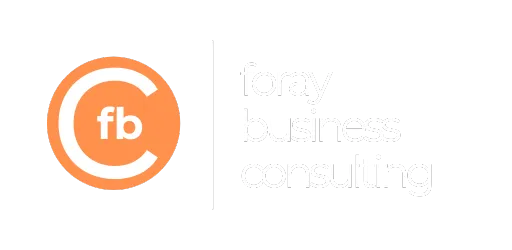
Equipment Financing and Leasing
Equipment Financing and Leasing: Essential Strategies for Business Expansion
Exploring equipment financing and leasing is crucial for businesses looking to grow without depleting their cash reserves. These financial tools allow companies to access essential machinery, technology, and vehicles while spreading the cost over time. This approach not only helps maintain liquidity but also offers various tax benefits and flexible terms based on the business's needs.
Options for obtaining equipment through financing and leasing range from banks like Wells Fargo to specialized companies such as Crest Capital. Each lender provides different features, like application-only approval or customized financing solutions, making it essential to understand what's available and choose the best fit for your business.

Navigating the application process for equipment financing can be straightforward with the right information. Companies like ELFA offer resources and certifications to help business owners understand the intricacies of leasing and financing options. By leveraging these tools, we can make informed decisions that drive our business success.
Key Takeaways
Equipment financing and leasing help businesses grow while preserving cash.
Various lenders offer tailored financing solutions to meet specific needs.
Accessing relevant resources can simplify the application process.
Understanding Equipment Financing
Equipment financing involves getting a loan to purchase business equipment. It's essential to understand what this financing entails, the different types available, and its advantages and disadvantages.
Definition and Basics of Equipment Financing
Equipment financing allows businesses to borrow money specifically to purchase equipment. This type of financing helps companies acquire necessary assets like machinery, vehicles, or computers.
We typically repay the loan in monthly installments, including interest. The purchased equipment often serves as collateral for the loan. By securing the financing, businesses can spread the cost of expensive equipment over time rather than paying the full amount upfront.
Types of Equipment Loans
There are several types of equipment loans that businesses can consider. Term loans are a popular option, providing lump-sum funds that we repay over a set period with fixed or variable interest rates.
Equipment leasing is another method where we rent the equipment instead of buying it outright, making smaller monthly payments useful for short-term needs or rapidly depreciating items.
Finally, some specialized loans, like Capital Leases, allow us to own the equipment at the end of the leasing period.
Pros and Cons of Equipment Financing
When it comes to the pros, equipment financing helps us avoid large upfront costs, improving cash flow and enabling us to focus funds on other business areas. Moreover, we can often get favorable interest rates based on our credit score and collateral value.
On the cons side, equipment loans can come with higher interest rates compared to other financing options. A good credit score is usually required to secure reasonable terms. Additionally, defaulting on payments can result in losing the equipment, as it typically serves as collateral.
In summary, equipment financing is a beneficial but complex tool. Understanding its types and weighing the pros and cons can help us make informed decisions for our business needs. For more detailed information, you can visit resources like Bankrate or Forbes.
Exploring Equipment Leasing
We will clarify what equipment leasing is, compare it to buying, and explain the types of leases and key points in a lease agreement.
Leasing vs. Buying Equipment
When we lease equipment, we pay for the right to use it without owning it. This can save us money upfront since we don't need a large sum to acquire the equipment. Monthly payments are typically lower compared to financing a purchase.
Buying equipment means we own it outright after paying off any financing. Ownership can be beneficial for long-term use but requires a significant initial investment. Leasing can be better for items that may become outdated quickly, like technology or specialized machinery.
Different Types of Leases
There are two main types of leases: operating leases and capital leases.
With an operating lease, the lessor maintains ownership, and the lease is typically shorter-term. Payments are considered operating expenses, and this type often includes maintenance and support from the lessor.
A capital lease is more like financing a purchase. We assume some ownership benefits and risks, and the equipment often becomes ours at the end of the lease term. Payments might be higher, but we gain more control over the equipment.
The Lease Agreement Explained
A lease agreement spells out all terms and conditions. Key points include the term length, monthly payment amount, maintenance responsibilities, and any buyout options at the end.
Understanding who handles repairs and maintenance can impact our choice. Some agreements may offer an option to purchase the equipment at a reduced price once the lease ends.
Clear terms on usage limits and penalties for overuse are crucial. We must ensure that the agreement aligns with our business needs and long-term goals. The better we understand the lease terms, the more we can make an informed decision about whether leasing or buying is right for us.
Eligibility and Application Process
Before securing equipment financing or leasing, businesses must meet certain eligibility requirements and go through a structured application process. This includes having the necessary credit score, annual revenue, and financial documentation.
Qualifying for Equipment Financing and Leasing
To qualify for equipment financing or leasing, businesses typically need to demonstrate solid financial health. This includes a good credit score, which varies by lender but often needs to be at least 600.
Annual revenue requirements differ as well, but many lenders look for businesses generating at least $50,000 yearly. Age of the business is another factor; most lenders prefer businesses operating for at least one year. While new businesses can still apply, they may face stricter terms.
Application and Documentation Requirements
When applying for equipment financing or leasing, businesses must provide various documents. These usually include:
Tax returns: Typically, past two years
Bank statements: Last six months
Financial statements: Profit and loss statements, balance sheets
Personal identification: Driver’s license, social security number
Some lenders may ask for additional documents, such as a detailed list of current debts or proof of insurance for the equipment. Having these documents ready can streamline the process.
Understanding Credit Approval for Leasing or Financing
Credit approval is crucial in the equipment financing process. Lenders assess both business credit and personal credit scores. A higher credit score increases the chances of approval and favorable terms.
Businesses should also maintain a low debt-to-income ratio and consistent cash flow. These factors show lenders that the business can handle loan repayments. Regularly reviewing and improving credit profiles can further enhance approval chances.
By understanding and preparing for these requirements, businesses can better navigate the equipment financing and leasing process. Being well-prepared helps in securing the best loan terms and effectively managing financial resources.
Financial Considerations
When looking at equipment leasing or financing, we need to understand the key financial aspects involved. This includes interest rates, taxes, and depreciation, how these options affect our cash flow and payments, and additional costs that may come up.
Interest, Taxes, and Depreciation
Interest rates vary between leasing and financing. Equipment financing usually has higher interest rates compared to leasing. It's important to consider how much we will pay in interest over the loan term.
We should also look at tax benefits. Leasing payments are often fully deductible as business expenses. On the other hand, financing might allow us to take advantage of tax deductions like Section 179, letting us depreciate the equipment cost over time.
Depreciation can impact our financial statements. Financing allows for asset depreciation, which can be beneficial for long-term tax planning.
Analyzing Cash Flow and Payments
Cash flow is critical in deciding between leasing and financing. Leasing may require lower monthly payments, which helps preserve cash flow. This can be particularly useful for businesses with tight budgets or fluctuating revenues.
Financing generally demands higher monthly payments because we are working towards ownership of the equipment. While this can reduce cash flow, it also means we will eventually own the asset outright, potentially leading to lower long-term costs.
It's key to balance the immediate impact on our cash flow with the long-term financial benefits of owning the equipment.
Additional Costs Associated with Leasing or Financing
There are various additional costs to consider. Leasing might involve fees such as origination fees or additional monthly service fees. These can add up and should be factored into our overall cost analysis.
For financing, we may need to make a down payment, which could be a significant upfront expense. It's important to account for any potential hidden costs, such as maintenance or insurance fees that may not be included in the initial loan agreement.
Understanding all these cost components will help us make a more informed decision between leasing and financing.
Industry-Specific Considerations
In equipment financing and leasing, businesses need tailored solutions based on their size and industry. Understanding these unique requirements helps in making informed decisions for efficient operations.
Equipment Financing for Different Business Sizes
We recognize that small businesses, startups, and large enterprises have varied financial needs. For small businesses, a small business loan or leasing can lower initial costs. Leasing is beneficial as it typically requires no down payment, freeing up cash flow for other needs.
Startups may opt for equipment leasing to mitigate risks. By leasing, startups can avoid large upfront payments and quickly adapt to market changes. Equipment financing solutions also offer flexibility in upgrading office technology to keep pace with industry advancements.
Large enterprises often utilize both business loans and leasing. Loans may be used for large purchases like heavy machinery, while leasing provides flexibility and tax benefits, especially for fleet and office technology.
Sector-Specific Equipment Needs and Solutions
Different industries have unique equipment needs. For example, the construction sector requires heavy machinery like bulldozers and cranes. Leasing these can reduce capital expenditure and maintenance costs.
Healthcare providers often need advanced medical equipment. Leasing allows them to acquire the latest technology without the high upfront costs. This ensures they stay competitive and provide the best care.
Fleet management is crucial for logistics companies. Leasing vehicles can offer better financial terms, allowing for regular upgrades and maintenance, which is vital for timely deliveries.
Office technology updates are essential in sectors reliant on IT infrastructure. Leasing computers, servers, and other tech equipment helps in staying current with minimal disruption and financial strain.
By understanding the specific needs and financial capabilities of different sectors, we can tailor equipment financing and leasing solutions that align with their strategic goals.
Lenders and Financial Institutions
When it comes to equipment financing and leasing, understanding your options for lenders and financial institutions is crucial. Different lenders offer distinct terms, rates, and application processes, which can impact your decision.
Banks and Credit Unions vs. Online Lenders
Traditional Banks and Credit Unions are often trusted sources for equipment financing due to their established reputation and lower interest rates. For instance, Wells Fargo and First Citizens Bank offer competitive rates and personalized service. Banks typically require rigorous documentation and a strong credit history.
Online Lenders, such as Balboa Capital and National Funding, provide a faster and more streamlined application process. These lenders often have more flexible credit requirements, making them accessible to small and medium-sized businesses. However, their interest rates can be higher compared to traditional banks.
SBA Loans offered through banks and credit unions can also be a viable option. These loans have government backing, making them less risky for lenders and offering lower interest rates to borrowers.
Alternative Financing Solutions
Alternative Lenders like Erie provide non-traditional financing solutions which can include leasing options and lines of credit. These lenders are an excellent choice when immediate cash flow is needed or in situations where traditional lending criteria might not be met.
One standout is US Business Funding which offers versatile lending solutions and flexible repayment terms. They cater to businesses that might face difficulties with conventional lenders.
We should consider using these options when traditional routes are either too slow or restrictive. They often provide faster access to funds but may come with higher interest rates and fees.
Specialized Equipment Financing Companies
Specialized Equipment Financing Companies like Crest Capital and Balboa Capital focus solely on equipment financing and leasing. They understand the specific needs of businesses looking to acquire machinery and other equipment.
Crest Capital is known for offering customized lending solutions tailored to the equipment being purchased, which can include flexible repayment schedules and competitive interest rates.
These companies provide an in-depth understanding of the equipment market and can offer more tailored solutions compared to traditional financial institutions. This can result in more favorable terms and conditions for businesses focused on acquiring high-cost equipment.
Contractual and Legal Factors
When engaging in equipment financing or leasing, it is important to understand the legal obligations and secure the appropriate protections. We will cover essential aspects like lease terms, collateral, security deposits, and insurance.
Understanding Lease Terms and Conditions
Lease terms and conditions outline the responsibilities of both the lessor and lessee. We need to read rental agreements thoroughly to ensure clarity about payment schedules, duration, and potential penalties for early termination. In many cases, these agreements may include clauses regarding the use and maintenance of the equipment.
Payment structure is a critical element. Monthly lease payments may be lower than loan payments, but the total cost can be higher if the lease extends over a long period. Unlike loans, we typically do not own the equipment at the end of the lease term. This type of leasing agreement requires us to return the equipment or renew the lease.
Conditions under which the lessor may terminate the contract early, or what happens if the lessee defaults, are also important. These conditions can involve penalties or legal actions, making it crucial to know what is permissible and what is not.
Collateral, Security, and Insurance
Collateral often plays a pivotal role in financing options. When we choose to finance equipment, the equipment itself usually serves as collateral. This arrangement provides security to the lender, ensuring that they can repossess the equipment if we default on the loan.
Security deposits are another consideration. For leasing agreements, we may need to provide a security deposit upfront to cover potential damages or unpaid lease payments. This deposit is often refundable at the end of the lease term, provided we comply with the contract terms.
Insurance protects both the lessor and lessee. We must ensure that the leased or financed equipment is insured against damages, theft, or loss. This requirement is often stated in the leasing or financing contract. Proper insurance coverage minimizes risks and enhances peace of mind for all parties involved.
Additional Resources and Support
Our equipment financing and leasing services offer various forms of additional resources and support to help businesses navigate their financial decisions effectively. We provide guided help through customer support, financial advising, and valuable educational tools.
Customer Support and Financial Advising
We believe in offering personalized support to meet our clients' needs. Our customer support team is available to assist with questions about loan and lease applications, helping to clarify terms and conditions.
We also offer financial advising to help businesses make informed decisions. Our advisors can evaluate which financing options best suit your needs, whether it’s point-of-sale financing or customized loans.
For technical assistance, equipment dealers and manufacturers can reach out to our support team directly for solutions to equipment-related issues.
Educational Resources and Tools for Equipment Financing
Educational materials are essential for businesses looking to understand the intricacies of equipment financing. We provide online resources that cover topics like interest rates, leasing structures, and loan terms.
Our website also offers calculators to estimate monthly payments and compare costs between different financing options.
Workshops and webinars are available to educate business owners about current market trends and best practices in equipment financing. We collaborate with industry leaders, including manufacturers and equipment dealers, to ensure our clients receive the most current and relevant information.
These resources aim to empower businesses to make strategic decisions and effectively manage their financial growth.
Frequently Asked Questions
We address common questions about equipment financing and leasing, focusing on the differences, processes, credit requirements, and the types and rates available.
What are the differences between lease financing and equipment financing?
Lease financing involves renting equipment from a vendor for a specific period. At the end of the lease, you can return, renew, or buy the equipment. Equipment financing is a loan to purchase equipment, which you own outright once you've paid it off.
How does the process of equipment leasing work?
The process starts by selecting the equipment you need. We then arrange a lease agreement with the leasing company. Payments are made over a set period. At the end of the lease term, you can return, renew, or purchase the equipment. Learn more.
What credit score is typically required to lease equipment?
Leasing companies generally require a minimum credit score. While perfect credit isn't necessary, a higher score improves your chances of approval and may secure better rates. Companies may have different thresholds, so it's best to check with the specific leasing provider.
Can you lease used equipment and what are the considerations?
Yes, it's possible to lease used equipment. Consider the condition of the equipment and its remaining useful life. Leasing used equipment can be more cost-effective but may come with higher maintenance costs and shorter lease terms. Check with leasing companies about their policies and options.
How do companies determine rates for financing or leasing equipment?
Rates are determined by factors such as credit score, type of equipment, lease term, and market conditions. Low-risk applicants may receive lower rates. Equipment type and its depreciation rate also play a significant role. Specific details can be obtained from individual leasing companies.
What are the various types of equipment financing available?
Types include loans, capital leases, operating leases, and lease-to-own options. Loans allow you to own the equipment after repayment. Capital leases are similar but more structured like long-term loans with ownership. Operating leases focus on short-term use without ownership. Lease-to-own lets you buy the equipment after the lease term. Detailed information can help you decide the best option.
GET FUNDED IN 1-2-3 EASY STEP
Checking your rate won’t affect your credit score

Apply Online
- Fast & Easy Online Application Our loan specialist will contact you Or call us at our phone number: (905) 594-1139

Review Your Options
-You will have your decision in minutes. No paperwork, no waiting

Get Funded
- True term loans – $5,000 – $1,000,000 Receive funding in as fast as 1 day
Foray Business Consulting © | ALL RIGHTS RESERVED | LOANS SUBJECT TO LENDER APPROVAL
The operator of this website is NOT a lender, does not make offers for loans, and does not broker online loans to lenders or lending partners. Customers who arrive at www.foraybusinessconsulting.com are paired with a lender or a lending partner, and redirected only to lenders or lending partners who offer business loan products.

